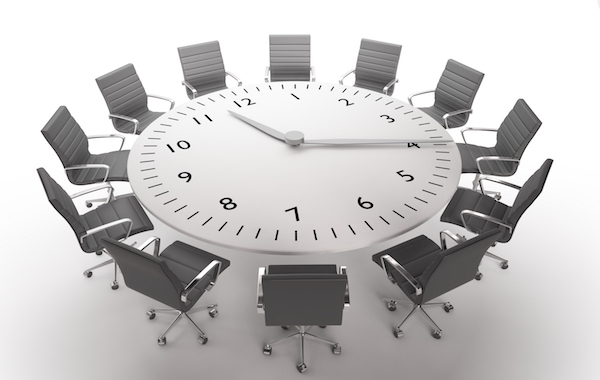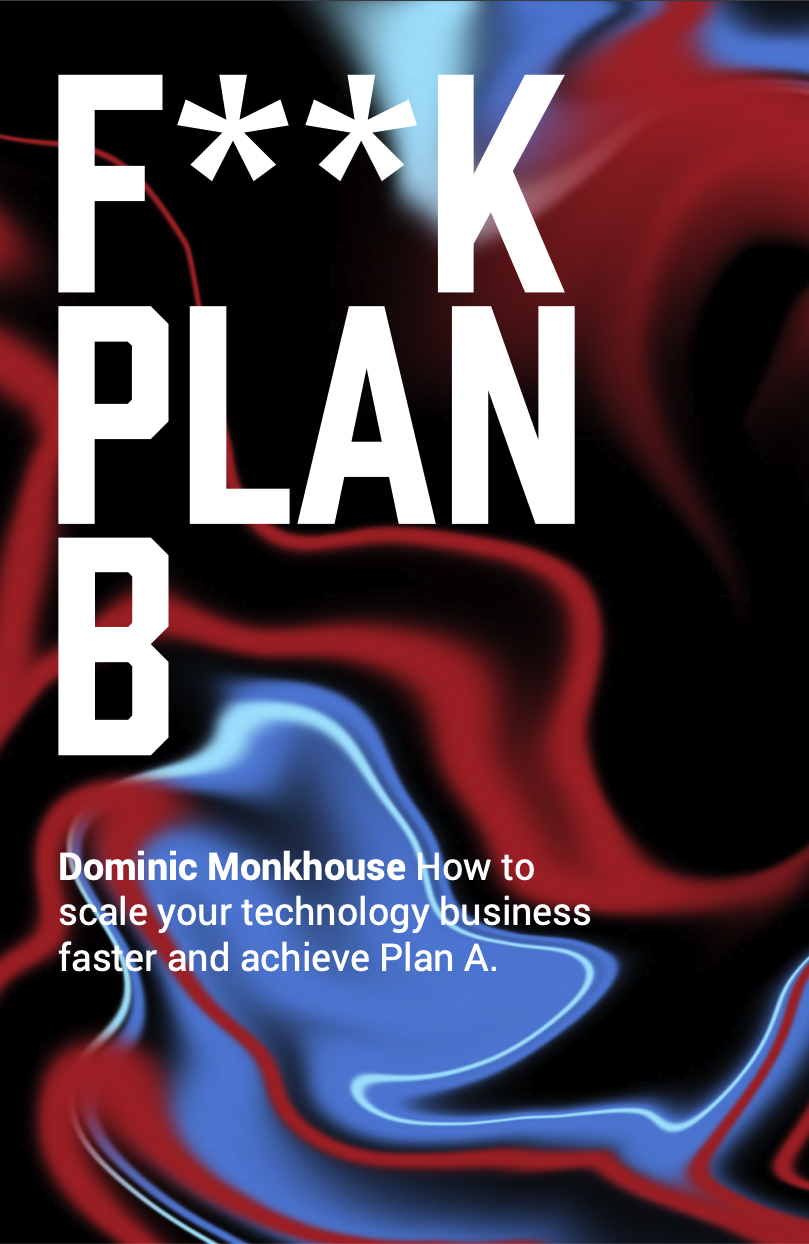What is a Level 10 Meeting (and why is it powerful)?
 Author: Dominic Monkhouse
Author: Dominic Monkhouse
Be honest. Are your weekly Executive Team meetings a waste of time? Do you sit there, bored to tears, as your leadership drones on about everything they’ve done the previous week? Why is it always like this? I see it time and time again in many different businesses. There’s no sense of forward momentum in these meetings. Nothing gets fixed. They’re just reporting exercises designed to frustrate even the most saintly.
Yes, these meetings fill a couple of hours of your day every week and justify your existence. But are they really the best use of your time? Surely there must be a better way.
Let me introduce you to the Level 10 Meeting.
Once you’ve seen their value, you’ll never look back. Solve issues, get the leadership team focused on the same agenda and have productive meetings. You will wonder why you persisted with your previous meeting format for so long.
Why is it called the Level 10 Meeting?
Level 10 meetings are so-called because one of the strict agenda items asks people to rate the meeting on a scale of 1 to 10 at the end of each meeting. The first time I do this with clients, I notice that it’s common to give the meeting a score of 7 – not too high or low. Hedging their bets.
I point out that they’ve been sitting there for 90 minutes acting like a passive victim. What have they done to make the meeting a 10? Nothing. In the next level 10 meeting, they need to take more individual responsibility. This is a wake-up call. Meetings will be shit if we let it happen.
The purpose of a Level 10 Meeting
How you run a level 10 meeting is how you run your business. Your company culture will only be as good as the worst behaviour you tolerate. If you don’t respect people’s time, they won’t respect yours. If you turn up late, don’t expect punctuality in others. Everyone knows the difference between a great meeting and an awful one. If you want to scale up, you need a meeting framework that’s fit for purpose.
The aim is to prioritise issues and solve the most important issues that haven’t been resolved in your daily huddles. The level 10 meeting operates at a more strategic level, ensuring everyone has a focus on company objectives and metrics on a regular basis, reminding everyone of their priorities.
A Level 10 meeting agenda
The 90-minute level 10 meeting agenda:
- Segue (5 minutes): Start the agenda with a check-in on a positive note. Each member shares personal and professional good news to set a positive atmosphere.
- Scorecard Review (5 minutes): Go through the company scorecard. Review key metrics briefly to ensure they are progressing.
- Objectives/Rock Review (5 minutes): Quickly review each objective or ‘Rock’ (major quarterly goal). Determine if they are on track or off track. Avoid discussions here.
- Customer/Employee Headlines (5 minutes): Share brief updates or important news about customers and employees.
- To-Do List Review (5 minutes): Check off completed items from the last meeting’s to-do list and discuss any incomplete items.
- IDS (Identify, Discuss, and Solve) Session (60 minutes): The heart of level 10 meetings. Identify key issues, discuss them in detail, and collaboratively solve them. Prioritise the three most important issues that will have the most impact.
- Conclude (5 minutes): WWW (who, what, and when) and next Steps: Confirm actions to be taken, who is responsible for each, and set deadlines. Identify the issues to be cascaded to the rest of the organisation. Each member rates the meeting from 1 to 10, aiming for a meeting score of 10.
Let’s dive into the details of each section
THE SEGUE
The agenda starts with a check-in at the beginning of every week, each weekly meeting serving as a crucial mental reset, allowing participants to shift their focus away from distractions and towards the meeting. It’s important for everyone to arrive early, ready to start promptly at the scheduled time. It adds a human element.
This 5-minute period allows attendees to leave behind whatever occupied them before the meeting and reorient themselves. During this time, each executive shares a personal and a professional highlight or achievement from the past week. Good news only, no bad news. This practice not only fosters a sense of camaraderie but also reinforces the understanding that the whole team comprises individuals with lives and interests outside of work.
As part of Project Aristotle, Google found that one of the hallmarks of high-performing teams is psychological safety. This is a great way to encourage this.
SCORECARD REVIEW
Monitoring the score on key metrics is fundamental to a good level 10 meeting agenda. You can tackle this in different ways, depending on your framework. Our clients use a range of different tools. The TOM (target operating model) is one of these. Clients map out their quote to cash and revenue generation processes, deciding on three to six metrics for each. The scorecard picks out any that are red or amber, adding these health metrics to the IDS list. Green metrics are passed over. This is how you focus on the priorities that need attention.
In the Scorecard review, a concise 5-minute segment, everyone examines the vital metrics to report on. This process offers concrete evidence of goal attainment and helps detect early issues. Each metric owner simply states if their item is “on track” or “off track” without delving into detailed explanations.
To maintain meeting flow, any action items, metrics or topics that are “off track” and require further discussion are moved to the Issues List, to be addressed later in the meeting. This efficient approach swiftly guides the team into the subsequent section, where they assess their quarterly Rocks.
ROCK OR OBJECTIVE REVIEW
If you’re using the Rockefeller Habits framework, then you move on to Rock updates (Rocks being the big organisational priorities for the quarter). These are directly linked to the company objectives for the year. Are any of these off track? If they are, they’re added to the IDS list. If they’re not, you don’t need to discuss them. This is not a time for reporting back on what you’ve done.
Our clients typically adopt the OKR (objective and key results) framework. Preferring it to Rocks. If you do, then you will review the key results in this section of the agenda.
Each member is accountable for 3–5 significant quarterly goals. In this swift 5-minute segment, the owner of each Rock simply states if it’s “on track” or “off track,” with any further queries or discussions deferred to the Issues section. With a clear picture of where things stand from the Scorecard and Rock reviews, the team is ready to share Headlines.
CUSTOMER AND EMPLOYEE HEADLINES
The next part of the agenda is often the most controversial. Every leadership team member needs to speak to at least one customer and one team member from outside their functional team every week. And this information needs to be fed in at this stage. My experience is that, as companies grow, these conversations become less frequent, and yet they’re fundamental. If you’re using Friday Pulse (a great measure of staff engagement), you could discuss anything from this week’s data. Similarly, if you’re running a good NPS (Net Promoter Score) programme, there should be a way to plug the leadership teams back into this. Any potential issues are added to the IDS list.
In this concise segment, executives share key updates about employees or customers, whether positive or negative. The facilitator will prompt everyone to contribute any notable headlines. This practice helps acknowledge successes and note any concerning news for later action items. This part should take no more than 5 minutes, after which the meeting progresses to the To-Do List.
TO-DO LISTS
The To-Do List focuses on immediate, 7-day tasks, distinct from the 90-day Rocks or objectives. These tasks, often overlooked in regular operations, are recorded to ensure accountability for their completion. Each task from the previous week’s to-do list is marked as either “done” or “not done” – no discussion, justification, or complaints are allowed.
Unfinished to-dos are either carried over to the next meeting or week or added to the Issues List for further attention. This swift, 5-minute process sets the stage for the meeting’s core segment: Identifying, Discussing, and Solving (IDS) all recorded issues.
IDS
Welcome to the secret sauce behind the success of the Level 10 meeting.
This is the core element of the meeting. The person presenting the issue will begin by clearly Identifying it. Subsequently, the whole team engages in a thorough Discussion, delving deep until they pinpoint the root cause of the issue. After every detail has been meticulously laid out, the team collaboratively devises the most effective way to Solve the issue permanently.
This portion of the level 10 meeting is the most time-consuming and typically spans approximately an hour if the preceding sections have been effectively facilitated according to schedule. During the IDS phase, the team collectively addresses all the issues previously raised. Normally, the Issues List encompasses 5 to 15 items, though occasionally, a few may carry over from the previous week’s meeting.
With all the issues itemised, either on a whiteboard or digitally using Metronome Growth Software (MGS), the team proceeds to prioritise issues, the three most crucial issues demanding immediate attention. They initiate with the top-priority issue, dedicating their efforts to comprehending its root cause. Following its resolution, the team transitions to the next issue in line.
This process repeats until there are just 5 minutes left in the meeting, at which point, regardless of how many issues remain on the list, the facilitator guides the meeting to its conclusion.
Items not actioned during the IDS can be carried over to next week or necessitate delegation to business leaders for further examination during smaller break-out meetings.
CONCLUDE
This vital section pulls the whole meeting together, ensuring no loose ends need addressing. In these last 5 minutes, the facilitator quickly reviews all new items on the To-Do List and any cascading messages that require additional communication outside the meeting room.
Finally, each attendee ranks the effectiveness of the meeting 1-10 before the facilitator ends the meeting on time. Every time.
How long should a Level 10 meeting last?

90 minutes – no more and no less. Items 1 to 5 on the agenda above should take 25 minutes, leaving 65 minutes for the IDS and wrap up.
What does IDS stand for?
IDS stands for ‘Identify, Discuss, and Solve.’ Once leadership identifies all relevant issues, they prioritise them to ensure a concentrated discussion and effective issue resolution. The main emphasis is placed on the highest-priority issue, where in-depth discussions are undertaken to address underlying problems comprehensively. A dedicated hour is allocated for this phase, with the understanding that it may suffice to address and resolve only one issue within this timeframe.
In our experience with clients, we frequently observe that this level of depth is often missing in the discussions among the leadership team during their regular weekly meetings. Conducting this type of meeting monthly also tends to be insufficient for adequately addressing the array of issues that arise. Consequently, certain matters remain unresolved.
Key Roles in a Level 10 Meeting
Facilitating a Level 10 meeting is a skill, so choose this person wisely. Some people are naturally better at taking the lead or shutting up extroverts, so introverts have equal airtime. You can rotate the role to give everyone experience.
Decide on a note-taker who can capture meeting notes from the IDS and To-Do list. My preferred system is MGS or Google Docs Live because it’s shared instantly. You can see your commitments come up in real-time and agree on them in the moment. It also saves the need to write anything up later.
Also vital is a timekeeper. I can’t stress enough how important it is to start and finish on time. Someone must keep the pace up and ensure conversations don’t run on too long.
How many people should attend a Level 10 Meeting?

I would always say no more than seven people per effective meeting. Evidence suggests that an eighth person will tip the balance and add no value to the Level 10 meeting structure. Experiments exploring social loafing show that when a team of people pull on a rope, the eighth person has no effect on the collective pull.
In my experience, six or seven is the optimum. When I’m coaching a leadership team, four people don’t feel enough – we could have had other voices in the room. When the leadership team gets to nine or 10, the discussion gets slower, and not everyone’s at the same level, so you don’t get the same quality of contribution.
- REFINE LEADERSHIP SKILLS
- STRATEGIC DIRECTION
- GREAT PLACE TO WORK
- EXECUTION FOCUS
- TRANSFORMATIONAL CHANGE
- EXIT READY BUSINESS
Where does the term Level 10 Meeting come from?
The level 10 Meeting is part of the EOS (Entrepreneurial Operating System) toolkit. And what is EOS? A framework for building business, similar to the Rockefeller Habits and Scaling Up. EOS tends to be used by the leadership teams of smaller firms and focuses less on strategy than on execution. In fact, it’s devoid of strategy tools. Companies often graduate from EOS as they begin to scale up.
After Verne Harnish authored Mastering the Rockefeller Habits: What You Must Do to Increase the Value of Your Growing Firm, entrepreneurs increasingly asked him for help to bring in the Rockefeller Habits. So he set up a coaching business – Gazelles Coaching International. One of his first certified coaches was Gino Wickman, who then created EOS – so it’s not surprising it’s focused on execution and has the Rockefeller Habits at its core.
Why are they so effective?
Once you’ve adopted the level 10 meeting format, you can use it in all your meetings, not just the weekly ones. If your business leaders and team fully embrace the approach, it can profoundly impact people’s desire to speak up and not waste time. Instead of sitting passively and waiting for the meeting to unfold around them, your team will realise that they’re in this together. Everyone is busy, so making every minute of the meeting count is necessary.
Looking weekly at priority issues will keep your business moving forward. Where things are smouldering, you can take action to stop them bursting into flames. There’s a constant sense of issues being ticked off and dealt with, easing the debt of broken things not fixed. As well as resolving and problem-solving the smaller annoyances of everyday working life, there’s also a constant reminder of the bigger picture. This will grease the wheels of execution, ensuring strategic priorities are kept top of mind.

Ready to scale up faster?
Answer 10 *challenging* questions and discover if your business will crush it or get crushed.
Written by business coach and CEO mentor Dominic Monkhouse, read more of his work here. Read his new book, Mind Your F**king Business here.